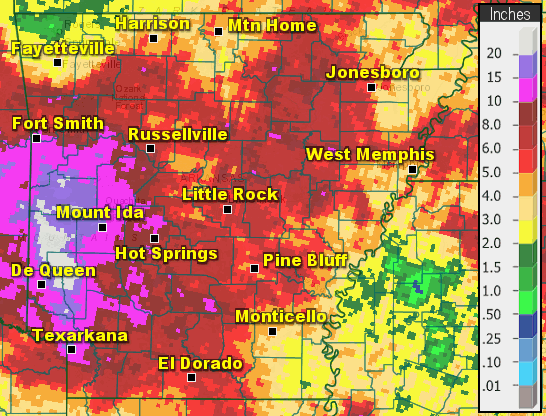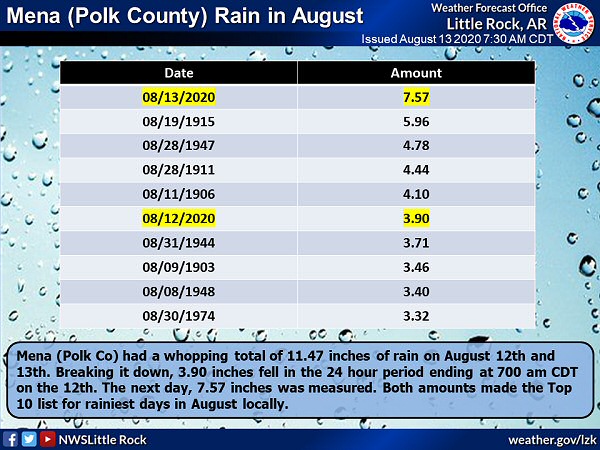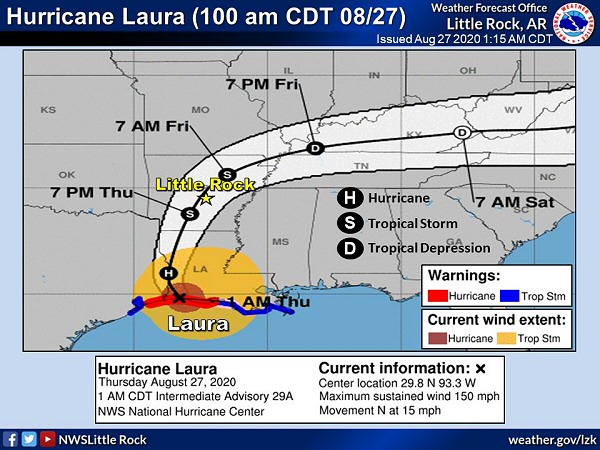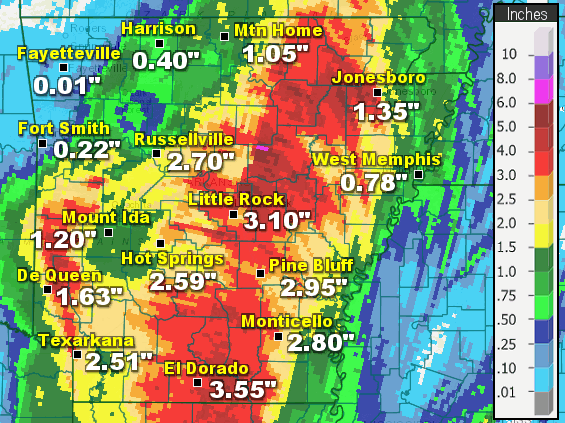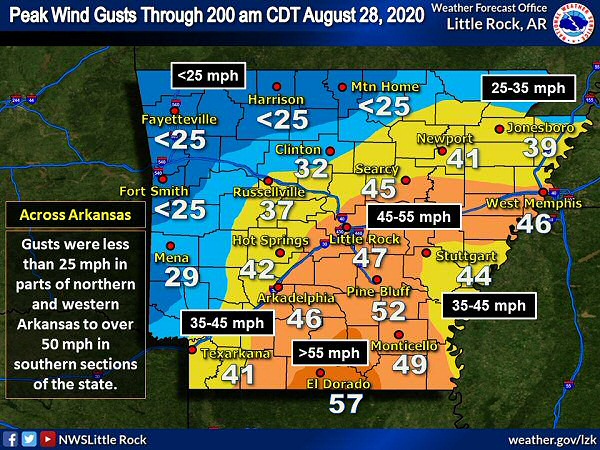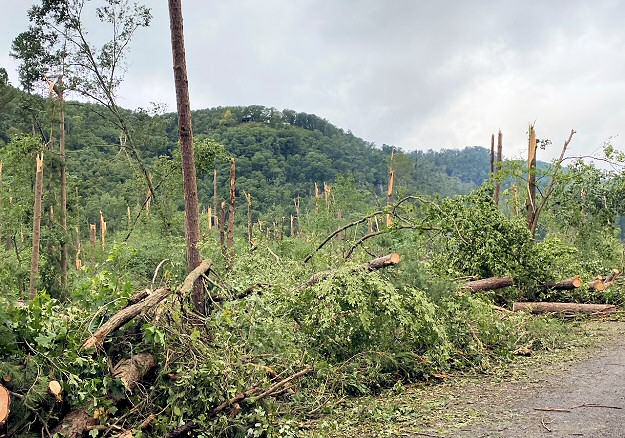|
Laura remained a hurricane well inland as the system ventured to the north at around 15 mph. A swath of heavy rain (two to more than five inches) spread into southern, central, and northeast Arkansas in the twenty four hour period ending at 700 am CDT on the 28th. Fordyce (Dallas County) received 5.25 inches of precipitation, with 4.48 inches at Cabot (Lonoke County), 4.39 inches at Marche (Pulaski County), 4.37 inches at North Little Rock (Pulaski County), 4.17 inches at Keo (Lonoke County), 3.85 inches at Calamine (Sharp County), 3.60 inches at Stuttgart (Arkansas County), 3.55 inches at Batesville (Independence County) and El Dorado (Union County), 3.53 inches at Sheridan (Grant County), and 3.50 inches at Alicia (Lawrence County).
The atmosphere was loaded with moisture, and this created high rainfall rates. Water came down faster than it could be carried away, and roads flooded at Benton (Saline County), North Little Rock and Sherwood (both in Pulaski County), Walnut Ridge and near Ravenden (both in Lawrence County), and a few miles east of Mena (Polk County).
Before Laura, it was dry from Little Rock (Pulaski County) to the northeast. Through the 26th, the dust was settled by only 0.35 inch of rain at North Little Rock (Pulaski County), 0.47 inch at Beedeville (Jackson County), 0.84 inch at Blytheville (Mississippi County), 0.91 inch at Des Arc (Prairie County), and 0.93 inch at Batesville (Independence County). A drought was ongoing in Mississippi County.
|
